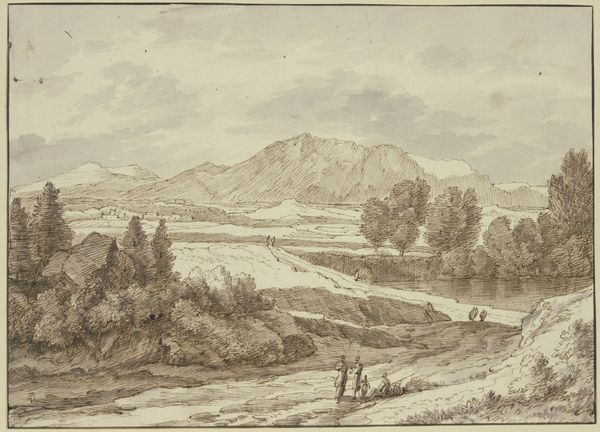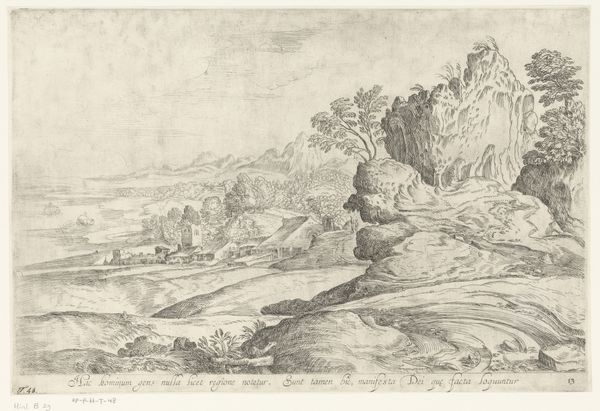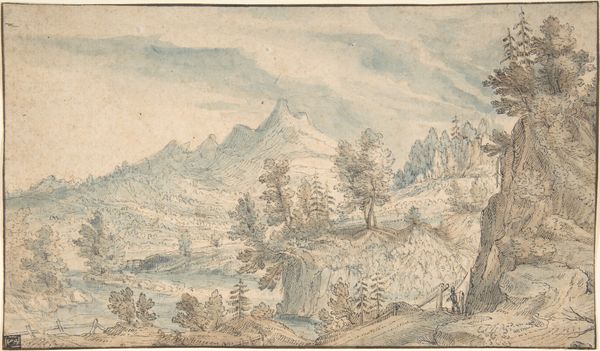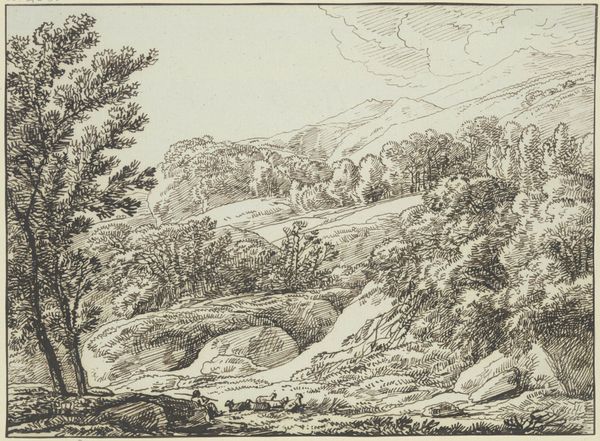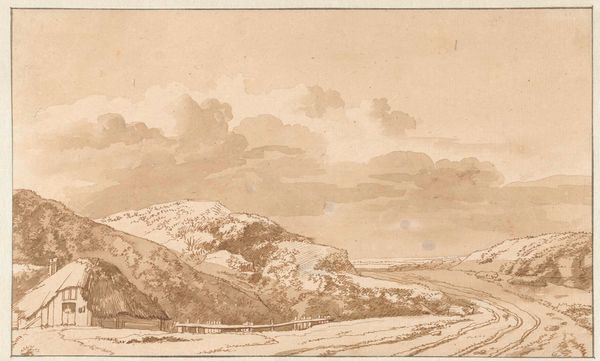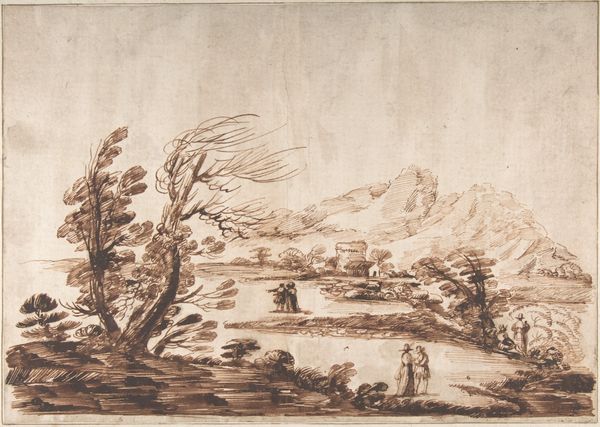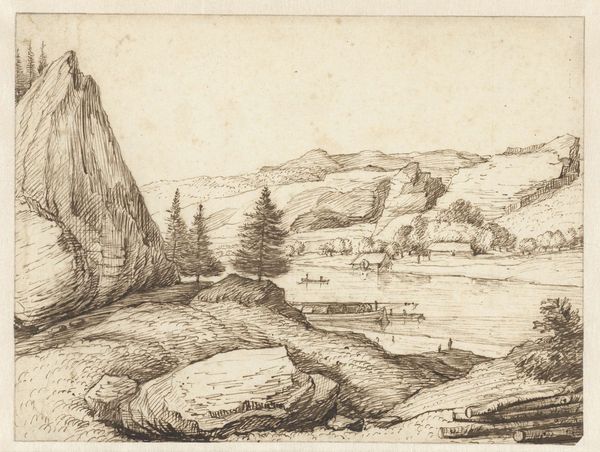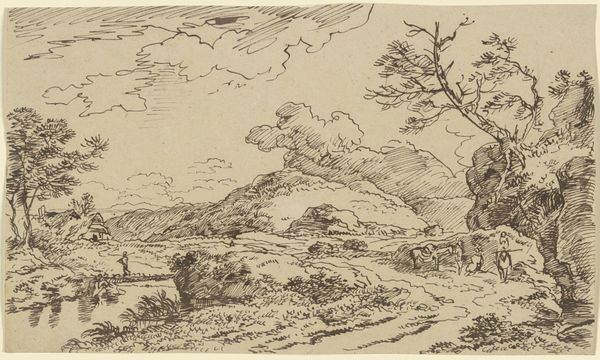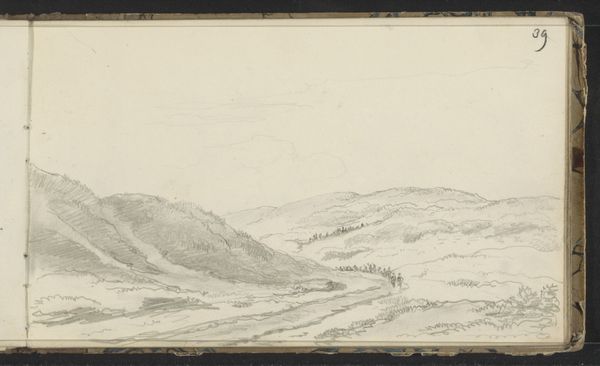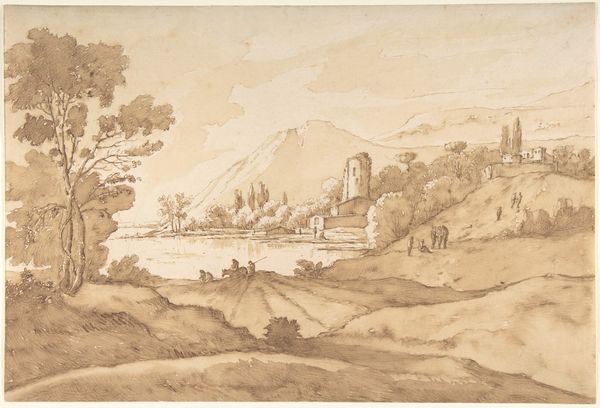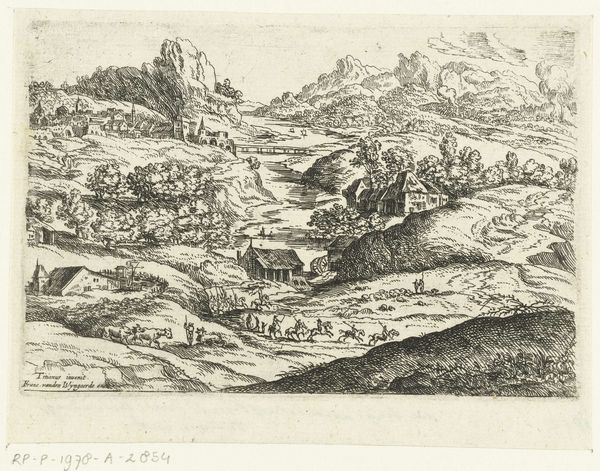
drawing, print, etching, paper, ink
#
drawing
# print
#
etching
#
landscape
#
etching
#
paper
#
form
#
ink
#
line
#
realism
Dimensions: sheet: 6 5/8 x 7 7/8 in. (16.8 x 20 cm)
Copyright: Public Domain
Curator: This delicate etching, “Mountainous River Landscape,” comes to us from the hand of Jacob Esselens, likely completed sometime between 1635 and 1687. The print, executed in ink on paper, now resides here at the Metropolitan Museum of Art. Editor: There’s a beautiful stillness to it, almost melancholic. The thin, precise lines create such a detailed scene but also a sense of quiet detachment. I'm immediately drawn to the textures of the landscape, especially the way the light seems to catch the peaks of the mountains in the distance. Curator: What strikes me is the meticulous production of such a vast landscape through such humble materials. Esselens uses etching, a printing process inherently tied to reproduction and distribution, to depict nature. It speaks to a broader shift in how landscapes were being commodified and consumed by the burgeoning middle class of the Dutch Golden Age. Editor: That's interesting! So, the making of the art object reflects this new accessibility, transforming something grand like a mountain range into a purchasable, domesticable scene. Curator: Precisely. And consider how these prints were often displayed. They would have served not merely as decorative objects, but also as signifiers of taste and social standing for the rising merchant class. The materiality and technique themselves underscore the transformation of nature into a marketable good. Editor: I hadn't thought about how owning an image of a landscape like this played into someone's social identity. I was too caught up in how timeless it seemed, somehow untouched by that sort of socio-economic pressure. It seems contradictory – a piece portraying wilderness also serving a social function in an urban context. Curator: Indeed. And this contradiction encapsulates much of the Dutch Golden Age, a period defined by expansion of trade and a corresponding investment in the land. Esselens work embodies this cultural moment perfectly. Editor: Well, thinking about it as a crafted object destined for a specific market changes everything. It adds layers of complexity. Now the image isn’t just pretty; it becomes part of a bigger cultural story. Curator: That’s what makes this particular etching so compelling. It pushes us to look beyond simple aesthetic pleasure, and ask bigger questions about art’s role within culture, both then and now.
Comments
No comments
Be the first to comment and join the conversation on the ultimate creative platform.
